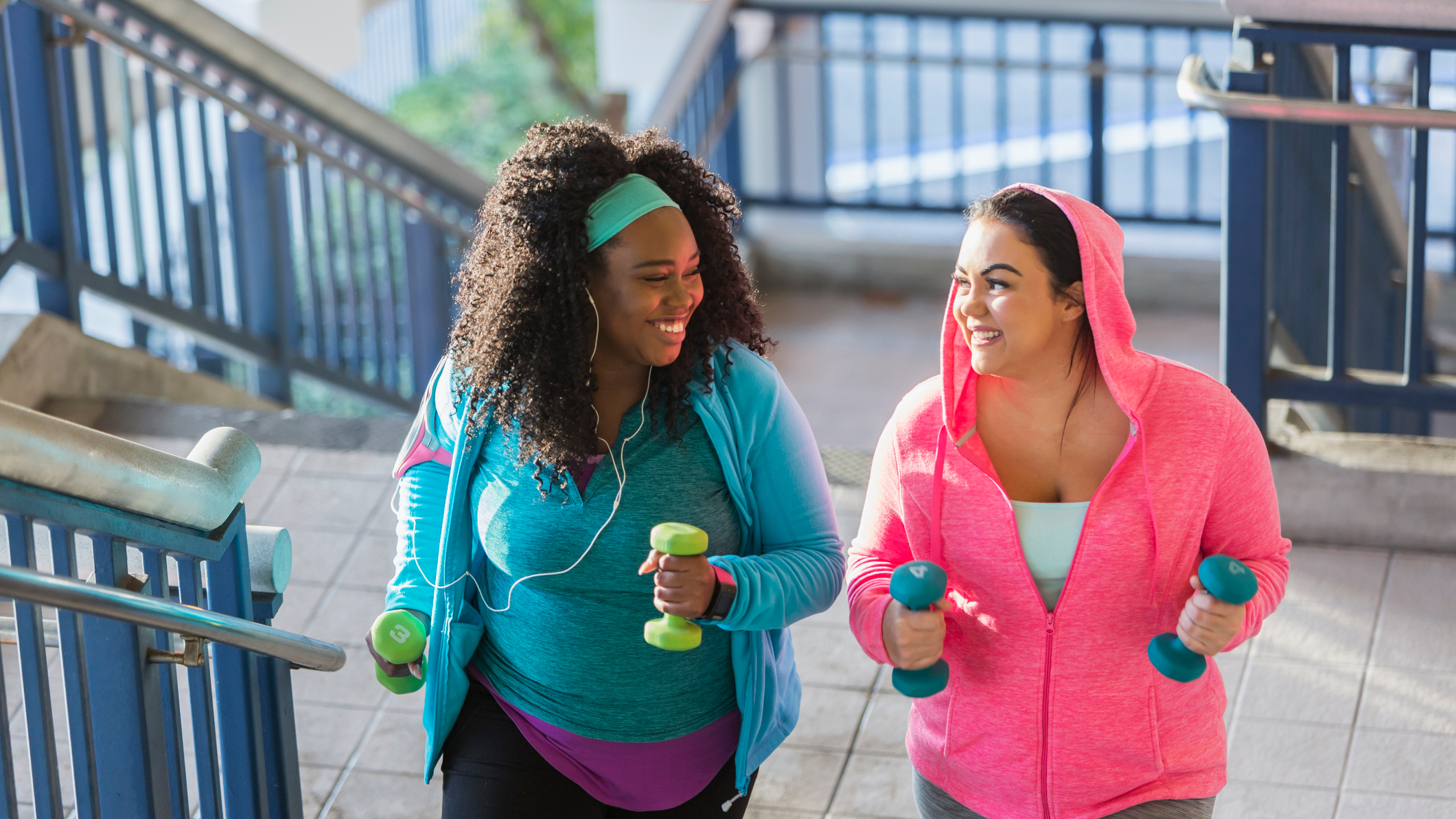Why you should ALWAYS take the stairs instead of using the elevator
Studies have shown stair-climbing is full of muscular and cardiovascular benefits


We often think we don't have time to exercise in our day, and sometimes that's true. Getting changed for a session of structured exercise, doing our workout and then having a shower, leaving a few minutes to get back into whatever task we're doing, can seem like a big ask in the middle of a busy day.
However, even on a really busy day, you can still help your body by increasing the amount of movement in your everyday life. if you're working from home, do push-ups while waiting for the kettle to boil, for example.
If you're commuting, you could get off the bus one stop early and walk through the park, or take a stroll round the block during your lunch break, incorporating a regular walking to lose weight practice. And of course, take the stairs instead of the elevator.
Taking the stairs has a ton of benefits. One study, published by researchers from McMaster University, found stair climbing routines ranging from "moderate" to "vigorous" helped ward off heart disease and develop lower-body muscle. It makes sense: when climbing stairs, you use your leg muscles to drive yourself upwards, developing power in your hamstrings and glutes.

Of course, these are the muscles that power us whenever we walk or run, so further development means an improvement in staying active long-term. For older people, these muscles also help us with rising from chairs and staying steady on our feet, so the practice is great for everyone with enough fitness to ascend the stairs. The study only looked at rehabilitation efforts after cardiac procedures, but it reported "substantial muscular improvement" as well as affording great cardio benefits.
If you want to get the benefits of a more intense stair workout, consider one of the best elliptical machines. These awesome pieces of kit will work the same muscles staircases do (and more, if you factor in the handles) for an extended period of time.
With the ability to up the resistance, use or not use the handles, create an extended cardio burn and avoid impact to protect your ankles, knees and hips, they're one of the best home exercise machines you can get.
Start your week with achievable workout ideas, health tips and wellbeing advice in your inbox.
Older people especially can benefit from the elliptical machine for the same reason they can the stairs: developing muscle in your lower body makes you steadier and more able to remain active in day-to-day life, delaying the process of atrophy. The fact ellipticals are low-impact exercise machines too are the icing on the cake.
Matt Evans is an experienced health and fitness journalist and is currently Fitness and Wellbeing Editor at TechRadar, covering all things exercise and nutrition on Fit&Well's tech-focused sister site. Matt originally discovered exercise through martial arts: he holds a black belt in Karate and remains a keen runner, gym-goer, and infrequent yogi. His top fitness tip? Stretch.
